What are Modeling Digitals or “Polaroids”?
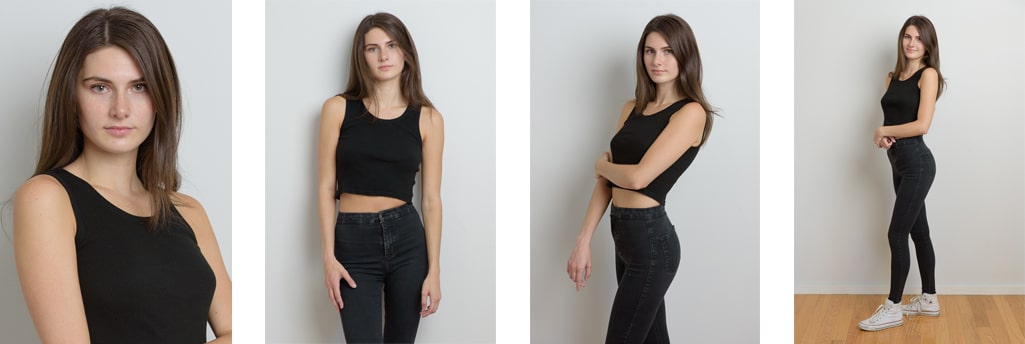
Example of modeling digitals taken at my studio in Outfit #1. (Model: Skyler)
What are Modeling Digitals & Why Do you Need Them?
Models who want to submit their images/portfolios to modeling agencies first need to create “modeling digitals” or “polaroids” to show their current look in the most natural way. I get many questions such as, “What’s a Polaroid?”, “Do I need modeling digitals?”, “Can I take them on my own?”, and so on. So I’ve created this web page that discusses the basics about modeling digitals/polaroids, and hopefully this answers any questions one might have about modeling digitals. Here we go… 🙂
If you would like information on booking a Modeling Digitals photoshoot,
please click the CONTACT ME button below:
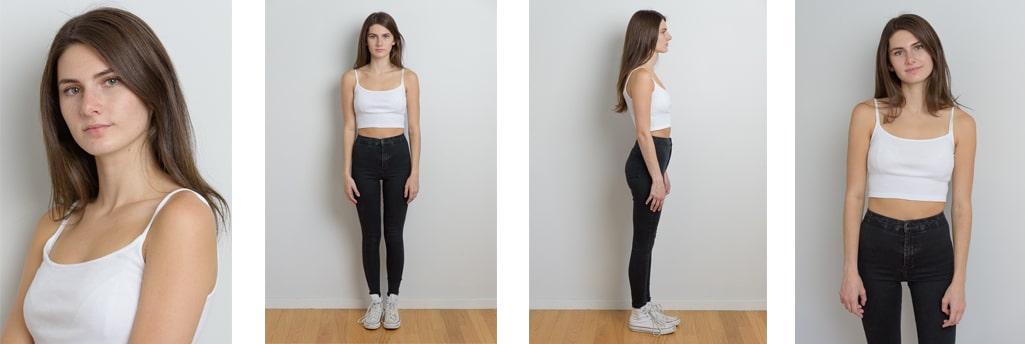
Example of modeling digitals taken at my studio in Outfit #2. (Model: Skyler)
So what exactly are “Modeling Digitals” or “Polaroids”?
Modeling Digitals (also known as “Polaroids”) are natural images of what a model currently looks like. These images were once taken on-the-spot with instant Polaroid cameras, (hence the name “Polaroids”), and they were taken to capture a model in simple lighting, without editing to show his/her natural appearance. Today, modeling digitals are taken with digital cameras, ideally with a white or neutral-colored background. Multiple shots of the model are taken to show his/her look from various angles, to give the client or agency an accurate representation of the model’s current look without heavy makeup or image editing.
Why Do you Need Modeling Digitals?
Modeling digitals allow both clients and agencies the ability to see what a model naturally looks like. These unedited images are standard for the modeling industry, and even signed models typically update their modeling digitals every few months, or if there are major changes to their look such as a change in hair color/style, tattoos, weight loss/gain, etc. It’s important to have updated current modeling digitals on-file.
Can I Take Modeling Digitals on My Own?
Yes! Do you need me to take your modeling digitals? Absolutely, not. However, lighting, posing, and angles are key. Since I’m well versed in this area, I know key things to look for when shooting, and if the goal is to get the most professional shots possible, you can book a session with me for your Modeling Digitals and/or optional headshots. However, if you wish to take digitals yourself, here are some tips to follow: Be sure to see some of my examples posted here, and read this page in its entirety. If you don’t have studio lighting gear at home, soft natural lighting is especially important. Don’t take selfies in front of a mirror in your bathroom. If you are going to take these images at home, have a friend take your photos, and try to find a white or light colored wall with a large window nearby for natural light. Hopefully the wall will be free of electrical outlets and cords, and can show you in a full-length shot. The ideal weather for this natural lighting look would be a cloudy day, for soft natural light that isn’t harsh. Check the agency guidelines for agencies you would like to apply to, and also search “modeling digitals” for sample poses that work best for digitals. Keep it natural, do not edit your photos, and try to capture the real you! If you find this is difficult, our would like to book a modeling digitals session, please contact me for information on booking a session.
Before shooting, follow the exact agency submission guidelines for digitals
Almost all agencies want a standard full-body shot, a quarter-turn shot from various angles, and a close up face shot. These images should be in a relaxed pose for a natural look. However, some agencies may want specific angles as per their submission specs/guidelines, so if you’re planning on submitting modeling digitals to a specific agency (or multiple agencies) it’s important to preview their guidelines before our shoot. If they have a spec sheet or guidelines, please bring these guidelines to the shoot, or submit them to me via email before our shoot so we can ensure you get the exact shots and angles you need. Since no two agencies are the same in their requirements, when shooting modeling digitals, I try to shoot every common requirement from agencies so that you’re covered when booking a modeling digitals package. This includes multiple styles, hair up/down, various poses, and so on.
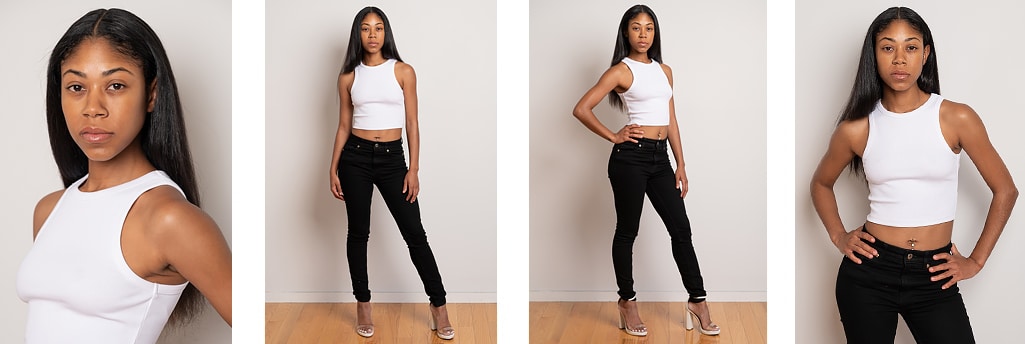
Example of modeling digitals taken at my studio. (Model: Tygre)
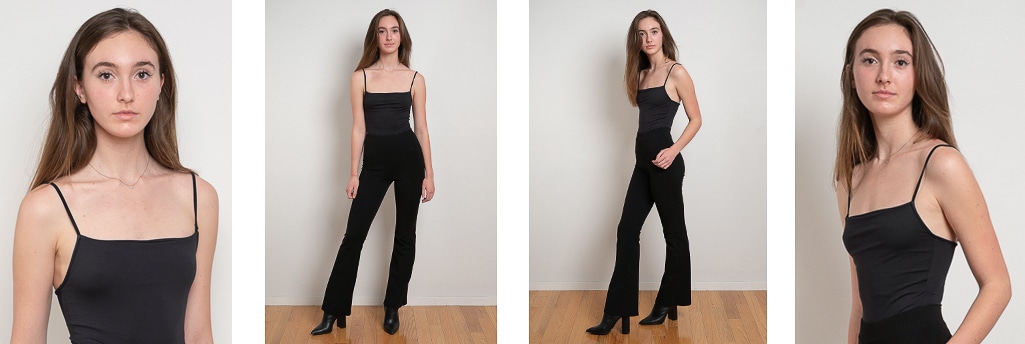
Example of modeling digitals taken at my studio. (Model: Milla)
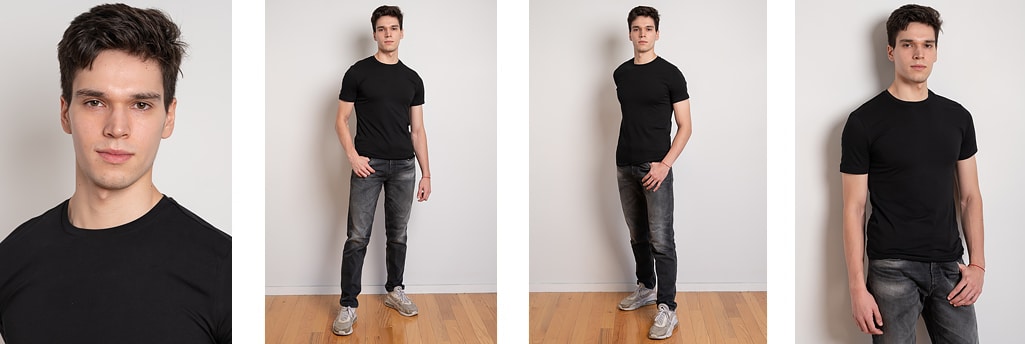
Example of modeling digitals taken at my studio. (Model: Anthony)
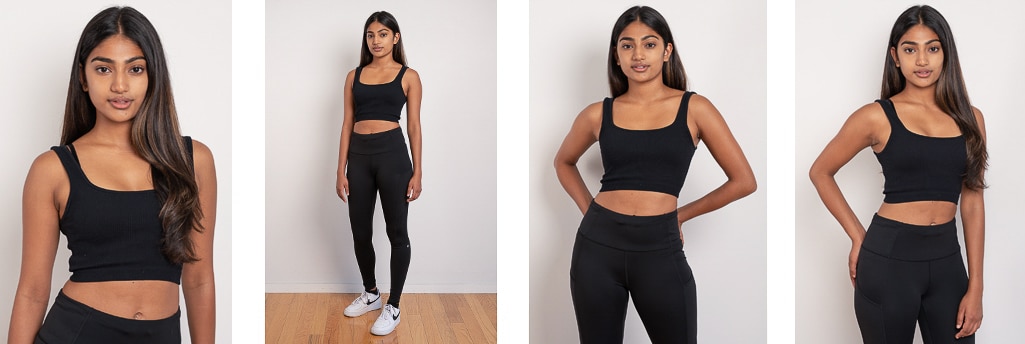
Example of modeling digitals taken at my studio. (Model: Mahika)
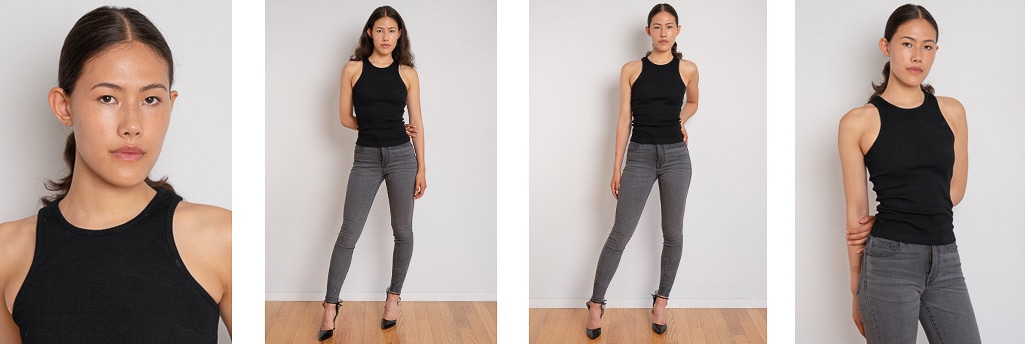
Example of modeling digitals taken at my studio. (Model: Catherine)
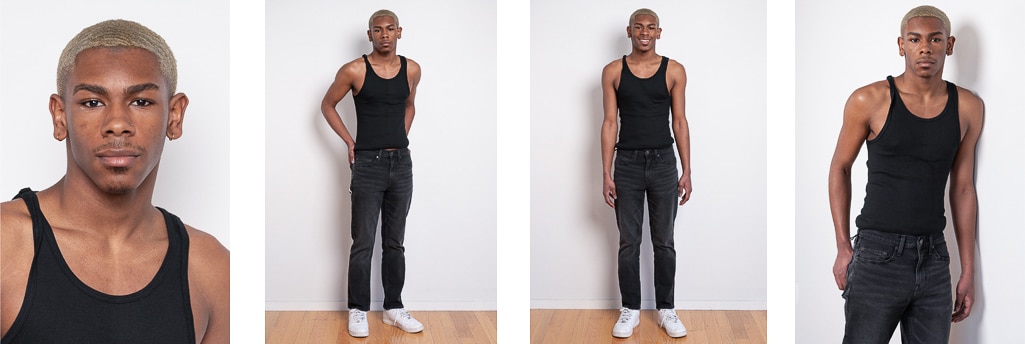
Example of modeling digitals taken at my studio. (Model: Christian)
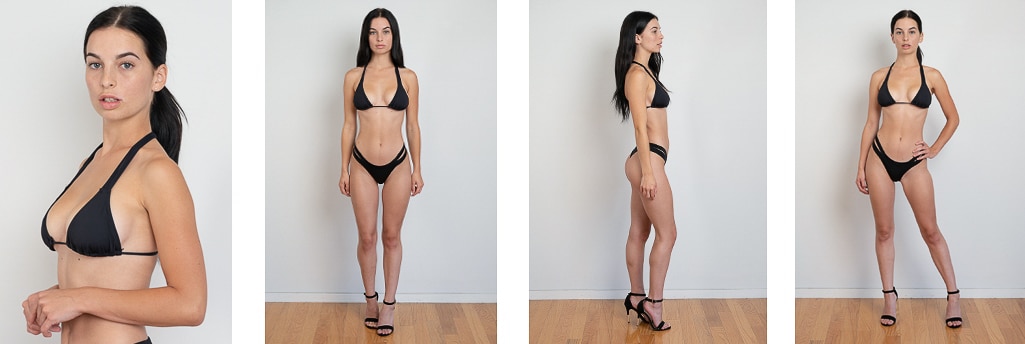
Example of modeling digitals taken at my studio. (Model: Kiala)
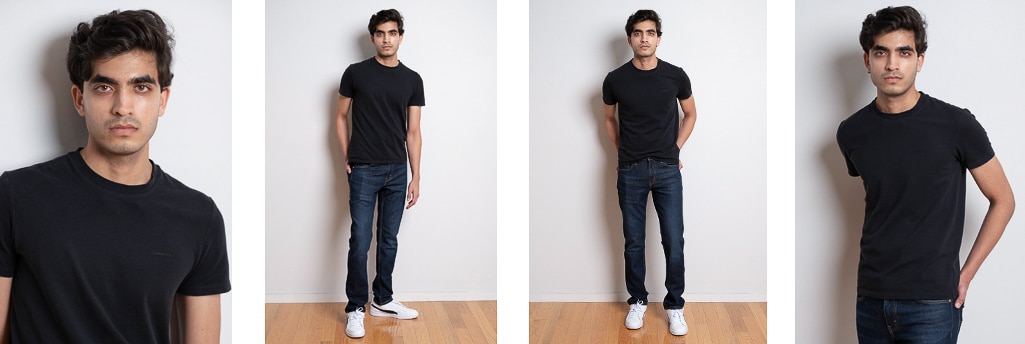
Example of modeling digitals taken at my studio. (Model: Parakh)
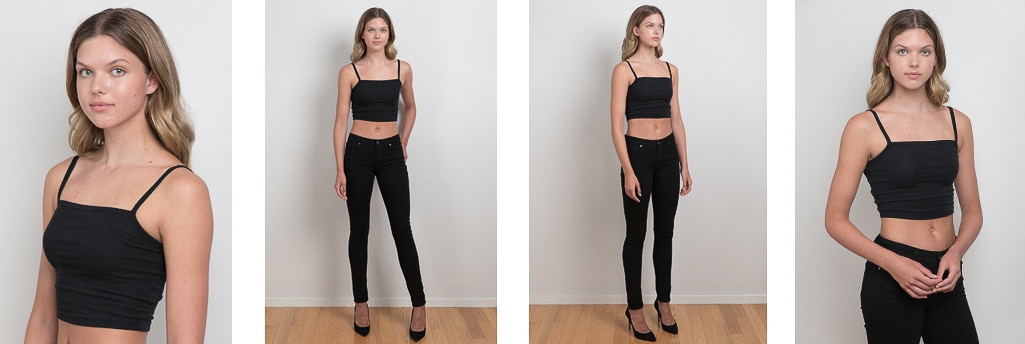
Example of modeling digitals taken at my studio. (Model: Sophie)
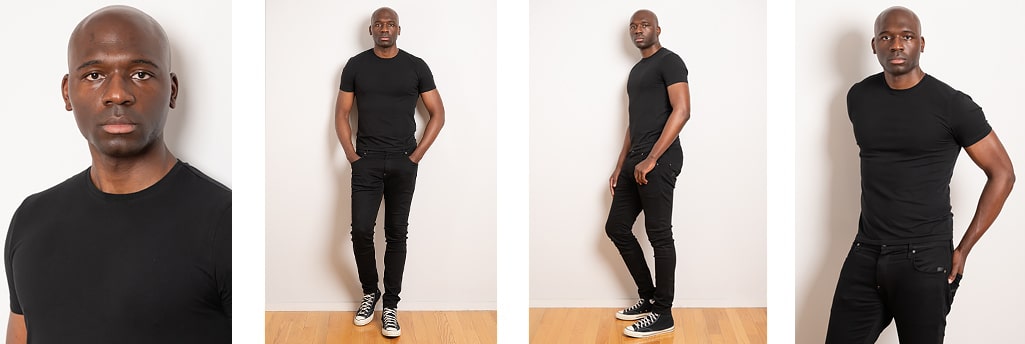
Example of modeling digitals taken at my studio. (Model: Frederic)
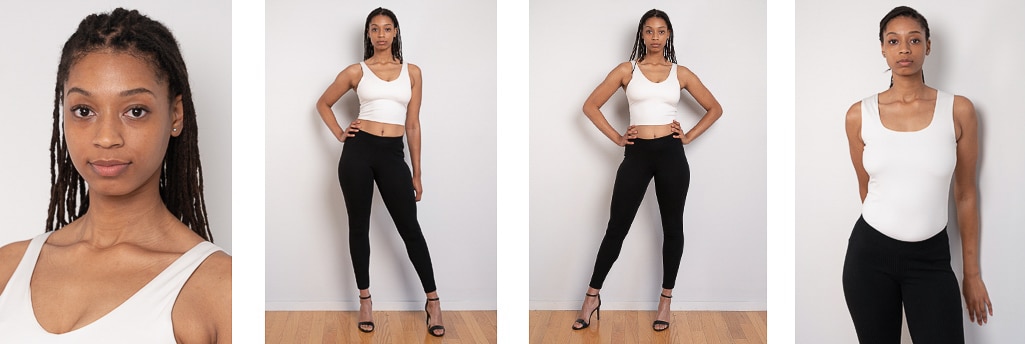
Example of modeling digitals taken at my studio. (Model: Savannah)
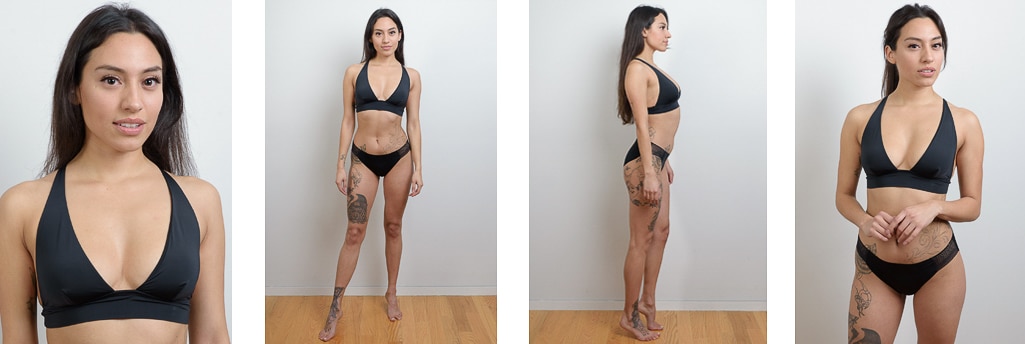
Example of modeling digitals taken at my studio. (Model: Karina)
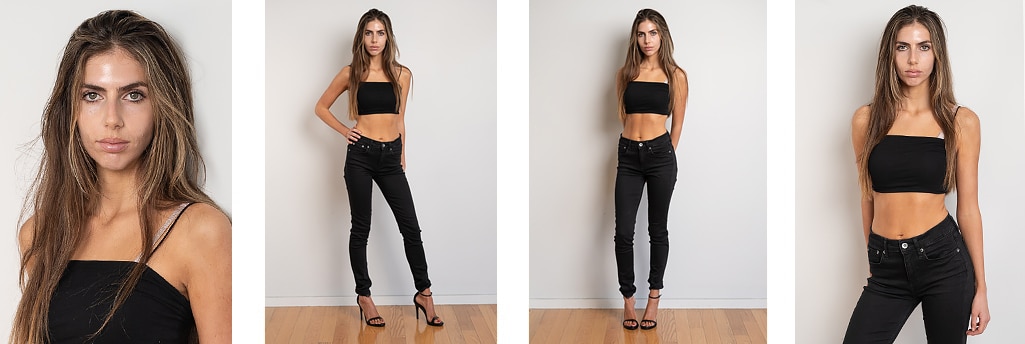
Example of modeling digitals taken at my studio. (Model: Milan)
What Do I Wear?
Agencies really want to see a model in a natural look to show their features and shape. Loose, baggy clothing is not acceptable. This means, form-fitting clothing that is not busy, and has a neutral color.
WOMEN: For fashion-oriented models, women will ideally wear black jeans/leggings and a form-fitting neutral-colored tank-top that is either black or white. For fitness or swimwear models, black bikinis are often worn to show shape, along with black heels are ideal to compliment this look. High heels are recommended but not required, as they are an acceptable “cheat”, often times making models appear taller and accentuating proper posture. For jeans/leggings colors, it’s safe to go with black jeans/leggings and a form-fitting tank-top that is either black or white.
MEN: For fashion-oriented models, men should ideally wear form-fitting jeans and a neutral form-fitting top. You cannot go wrong with black jeans and a slim cut black t-shirt. For fitness or swimwear models, men often take shirtless modeling digitals as well to show shape.
The goal of modeling digitals is to make you naturally standout among neutral tones. Clothing with bright or busy patterns are not to be used as they detract from the natural look.
What about Hair & Makeup?
Everything about modeling digitals is supposed to be natural. This means your hair should not be overly styled, and heavy makeup is not recommended. You will see some sites that say that absolutely no makeup should be worn, but this is not realistic. Extremely light concealer that gives off a completely natural look is fine. No eyeliner or heavy mascara, and if you wish to go without makeup, that works too, but very light makeup and natural lip balm is completely fine.
Are Modeling Digitals Edited in Post-Production?
No! I understand that we live in an age of Facetune, Photoshop’s liquify feature, and the occasional photo that might make a model’s skin look like a painting. However, everything about modeling digitals should be natural. This means that all shots from the shoot are not edited in any way. This ensures that agencies and clients see the real you. The only post-production that may/should be applied to modeling digitals would be a lens correction tweak in Lightroom or Photoshop to ensure that proportions are natural. When shooting at wider angles with a 24mm-70mm zoom lens for example, the wider the angle, the more that objects/people can appear distorted. Thus, if shooting at wider angles, it’s important to correct any possible lens distortion in the image in post-production. This keeps things natural and although this is not what most people consider “photo editing” (such an blemish or wrinkle removal), etc., it is technically still “editing” since it’s post-production work on an image. If you’re shooting digitals at home with a smartphone, or even using a DSLR with a lens in the 85mm range, you don’t need to worry about this. The key takeaway in this is that unlike editorial modeling portfolio shots, modeling digitals are shot with the intention of being unedited, and for any modeling digitals package booked with me, models receive all modeling digitals unedited and watermark-free.
If I book a shoot with you for Modeling Digitals, will I receive all unedited JPG files from our shoot without any watermarks?
Yes! My other photo packages for headshots, hypercolor, portraits, etc., typically require some photo editing to finish the overall look of the shot. Thus, for those types of photoshoots, a light watermark must be applied to all proofs to designate that they are unfinished and not final. However, Modeling Digitals are supposed to be natural without editing, to show people the real you. Thus, since editing is not required for Modeling Digitals, there is no “unfinished work” here, and you will receive all shots from our shoot without without any watermarks, and they are ready to go to be submitted to agencies, etc.
For Modeling Digitals, what resolution will the images be that I receive as unedited JPGs?
The unedited JPG images provided for the Modeling Digitals packages will be provided at a maximum of 1800px (max width or length) and saved in the JPG file format. These images are unedited JPG files. Note: the terms “unedited” and “RAW files” are different and not interchangeable, and it’s a common mistake to interchange them. RAW files aren’t common, are extremely large in file size, and require special software to view/edit. Agencies will not accept these. RAW files are never released, but unedited JPGs will be provided to you in a file format (JPG) that you can view and use on any computer or device, and are in file size and resolution perfect for submitting to agencies.
ProTip: Properly Name Your Modeling Digital Files
In many cases when you receive final files from me, the files will be named something along the lines of MMP_1234.jpg. However, when applying to modeling agencies, it’s best to name your files properly with your full name. So instead of naming files “MMP_1234.jpg”, you want agencies to receive files named “Jane_Smith_digitals_01.jpg”, or something along those lines, so they easily keep track and know these images represent you.
What expressions are best for modeling digitals?
I often encourage people to be themselves when shooting. That means if you naturally smile quite often, it’s okay to project your personality in photos. However, with modeling digitals, much like with the idea of being natural and not going overboard on makeup, it’s typically best to not go overboard with expressions as well. Subtle/casual smiles are fine, but it’s best to keep expressions more on the subdued side, and remember that you want to appear to a wide variety of agencies and clients. This typically means a more professional demeanor, so extreme poses or expressions should be avoided.
Want to book a shoot for modeling digitals?
Please contact me, and select the “Modeling Digitals” option when selecting your desired photoshoot on my Contact page.
Want to learn more about a photoshoot or have a question?
Interested in a photoshoot? Just use the contact page here to email me with any photo session ideas you may have. If you are interested in portraits or headshots, I shoot professional portraits and professional headshots both outdoors with natural light and/or strobes, or in my San Francisco Bay Area-based photo studio with a wide variety of backdrops and lighting options for many types of projects. Whether you need fashion photography, portrait photography, yoga or fitness photography, headshot photography, an online dating profile photographer, beauty headshot photography, artistic extreme colored gel hypercolor portraits, product photography, modeling digitals for agencies, or anything in-between, I offer various packages for many budgets. I look forward to hearing from you. Let’s shoot!
About Me
San Francisco Bay Area Portrait Photographer
San Francisco Bay Area Portrait Photographer • San Francisco Bay Area Headshot Photographer • San Francisco Bay Area Beauty Headshot Photographer • San Francisco Bay Area Fashion Photographer • San Francisco Bay Area Hypercolor Creative Portrait Photographer • San Francisco Bay Area Yoga & Fitness Photographer • San Francisco Bay Area Fashion Photographer • San Francisco Online Dating Profile Photographer • San Francisco Bay Area High School Senior Portrait Photographer • San Francisco Bay Area Personal branding Photographer • San Francisco Bay Area Product Photographer • San Francisco Bay Area Modeling Digitals & Polaroids Photographer • San Francisco Bay Area Natural Light Portrait Photographer
Studio Location
Fetching directions......


10 Comments
Hi Mike! This was very informative, I’ve learned so much by reading this. What cameras would you recommend for taking digitals at home? I’ve researched DSLR cameras, mirrorless, point and shoot, etc. I wasn’t exactly sure what would be the best camera for capturing that “natural” look. Thanks!
Hi Blake, honestly, I would not be concerned with gear for modeling digitals. Don’t forget that digitals were originally taken with Polaroid cameras because these images were first made to be quick natural representations of a model’s current look. So even a modern smartphone camera or point-and-shoot camera is fine, since it’s mainly about the light. If you have a DSLR or mirrorless, just be sure to not shoot with a shallow depth a field, (you don’t want to be shooting this at f/1.8) and set your aperture to something like f/5.6-f/8 in manual mode and you should be fine to ensure the model is clearly in focus. Any crop sensor or full frame DSLR/mirrorless will be great as well, and a simple “nifty fifty” 50mm lens would be perfect for this in most cases, with a 24mm-70mm zoom lens pretty much covering everything as well, depending upon your shooting area and how wide you need to go. In post production, (like Lightroom or Photoshop) just be sure to apply lens correction so that the model doesn’t have any distorted features if shooting with a really wide angle like 24mm, etc.
Lastly, just be sure to have soft natural lighting and a clean wall/area which are both especially important. You can get really close to a window for natural light on a cloudy day, and if the light is too harsh, a cheap frosted (not clear) shower curtain can be put in front of the window off-camera to help diffuse the natural light.
Hope these tips help, and please let me know if you have any other questions, thanks.
On a crop sensor can I use a 35mm lens for model Polaroids???
Yes, for full-length you can use a 35mm on a crop sensor. You can simply adjust the subject by moving closer/further away from the subject. However, if you use this lens for headshots (which is the equivalent of about 52mm on full frame) I would make sure to use lens correction settings for your exact lens in Lightroom to avoid any facial distortion. But other than that, it should be fine.
Sir….can I use artificial light to shoot Polaroids?
Yes, you can. The goal is to make things look natural. So if you’re using artificial light, I would suggest a large octobox, a parabolic umbrella, or shooting light Ito a V-flat and bouncing it back onto your subject.
Thanks so much Mike. This article was amazing and quite helpful. A colleague of mind ask me this question on what I know about Polaroid pictures and I did well to explain the little I think I could, but sincerely you have embroider my scope. Thanks once again.
You’re very welcome, and I’m glad this article could assist you. Thanks for reading.
Hey! I was wondering if you can edit modeling digitals with Apple Edit to brighten them up but not actually change any skin/blemishes/under eye etc? Thank you!
Hi Vic, Modeling Digitals should be unedited, and that also includes post-processing. They’re made to be natural. Thus, even though you are not altering skin/blemishes, it’s really not advised to use any post-processing software even just to brighten them up. Natural is best.